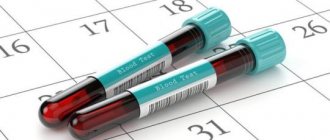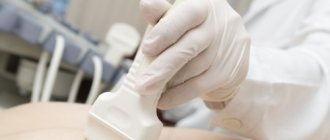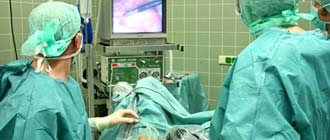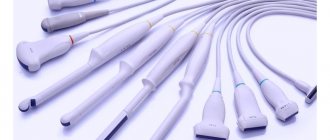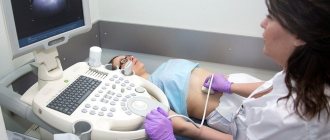Medical center » Diagnostics » Ultrasound » Folliculometry
Prices Doctors Info
Sign up Folliculometry is an ultrasound diagnostic method with which a doctor can monitor folliculogenesis throughout the entire menstrual cycle. That is, with the help of such a study it is possible to monitor the process of follicle maturation, as well as how the dominant one develops. Thanks to such observations, the doctor can receive information about each phase of the menstrual cycle. The main task of folliculometry is to determine the day suitable for conception. With its help, they determine the date of ovulation, the presence of pathologies, find out whether artificial stimulation is needed, and monitor the development of the endometrium.
At SM-Clinic, folliculometry is carried out using modern high-tech equipment of the latest generation, which guarantees accurate and informative results.
Indications for folliculometry
Folliculometry is prescribed by a gynecologist in order to confirm or exclude pathologies and monitor the ovulation process.
Among the main indications for diagnostics are the following:
- Absence of pregnancy for a long time.
- Determining the time most suitable for conception.
- Assessment of ovarian function.
- The need to stimulate ovulation.
- Hormonal imbalances.
- Determination of the structure of the ovaries.
- Counting "spare" eggs.
- Planning for insemination.
- IVF protocol planning.
- Diagnosis of pathologies of the genital organs: fibroids, cysts, hypoplasias.
- Determination of the fullness of the menstrual cycle.
- Hypomenorrhea or oligomenorrhea.
- Dysfunction of the gonads.
- Lack of ovulation.
On what day of the cycle is the study scheduled?
The day of folliculometry largely depends on the monthly cycle. The exact day of the examination is determined by the gynecologist. If a woman has a monthly cycle of 28 days, then the first ultrasound is done on days 7–10. Next, examinations are done at intervals of one or two days, depending on the results of the previous one.
Menstrual cycle
If a woman’s cycle is a little longer, then the first ultrasound examination is done on the tenth day or a little later. The intervals between studies remain the same. With a short cycle, the first diagnostic procedure is carried out slightly earlier with the same preservation of intervals between procedures.
In case of an irregular cycle, the first procedure can be prescribed as early as the third to fifth day of the monthly cycle. The therapist may even need up to six diagnostic procedures to assess the functionality of the reproductive system. The interval between procedures is from two to three days.
Preparation for folliculometry
No special preparation is required. A woman needs to follow a few simple instructions, in particular, adhere to a special diet. Also, before the procedure, you should not consume foods that cause gas formation. These products include:
- cabbage;
- legumes;
- alcohol;
- flour products;
- carbonated drinks.
An hour before transabdominal folliculometry, it is recommended to drink 1 liter of water and not go to the toilet. Before a transvaginal procedure, on the contrary, you need to empty your bladder.
What is folliculometry?
Folliculometry is an ultrasound examination that must be completed primarily by women who have irregularities in the menstrual cycle or are planning pregnancy in the near future. The medical procedure in question is also relevant before artificial insemination (IVF).
Its importance in this case is due to the ability, through folliculometry, to determine the readiness of the female body to accept a fertilized egg, giving it the opportunity to “take root”, and subsequently maintain the pregnancy until childbirth.
Traditionally, when carrying out such a procedure, gynecologists are able to track not only the fact that ovulation has occurred or is approaching due to the significant growth of the dominant follicle, but also the state of the endometrium, which has a huge impact on a woman’s physical ability to conceive and bear a child.
In addition, folliculometry is a reliable method for determining dysfunctions of the female reproductive system , which makes it possible to identify serious diseases at the initial stage.
How the procedure is carried out at SM-Clinic
Folliculometry is carried out in two ways: transabdominal and transvaginal.
With the transabdominal method, the patient lies on her back, frees her stomach from clothing to open the area from the pubis to the chest for diagnostic manipulations. Then the doctor applies a special gel and begins to move the sensor across the abdomen. As mentioned above, the patient first needs to drink a large amount of water so that the bladder is full.
During the transvaginal examination, the patient takes off her underwear, lies on her back and bends her knees. The diagnostician takes the vaginal sensor, puts a condom on it and slowly inserts it into the vagina. During the procedure, the patient does not experience any painful sensations, only slight discomfort is possible. Before the examination, it is recommended to perform genital hygiene and empty the bladder.
Decoding the results
Results obtained from folliculometry may vary.
With their help, the doctor can immediately establish a diagnosis or determine the need for further research. For example, if a persistent follicle is identified, drugs are prescribed that restore the second phase of the cycle. If an egg is needed for IVF, diagnostics are used to determine the day suitable for collecting the material. The study also makes it possible to understand whether a woman needs additional stimulation of ovulation and how it should be carried out.
With the help of folliculometry, they not only monitor folliculogenesis, but also monitor hormonal levels. Based on the results obtained, the doctor can issue a conclusion about the presence of abnormalities or normal ovulation.
Normal ovulation is considered to be a condition in which a mature dominant follicle reaches a size of 15-24 mm, then the egg ruptures and exits into the fallopian tube. A corpus luteum forms at the site of the follicle, and a small amount of fluid may appear behind the uterus. During this period, the amount of progesterone increases.
There is a peculiarity: when an infertile woman has a normal ovulation pattern, this indicates that the cause of infertility lies in obstruction of the fallopian tubes or other factors. What deviations does the study reveal?
Sometimes ovulation does not occur. This happens either once or occurs systematically. Using folliculometry, the following pathologies can be identified:
- Atresia. This is a condition in which the follicle first grows and then begins to regress. Sometimes it grows up to 18 mm, but then stops developing, decreases and disappears. The corpus luteum, the fluid behind the uterus, does not appear.
- Persistence. In this case, the follicle develops normally, reaches the required size, but does not rupture. As a result, there is no ovulation, since there was no release of the egg. This condition can persist throughout the entire menstrual cycle, and sometimes several. Corpus luteum and fluid are also absent.
- Follicular cyst. Due to persistence, a cyst may develop. This occurs when the follicle continues to grow and reaches a size of more than 25 mm. Since he does not ovulate, the volume accumulates, eventually a cyst appears.
- Luteinization. Luteinization occurs when a follicle has formed, but has not ovulated, and a corpus luteum still appears in its place. This deviation occurs due to the high content of luteinizing hormone during a period of time when the follicle has not yet matured. This diagnosis may indicate pathologies in the ovaries.
- Lack of development. In this case, the woman has follicles, but they do not grow. This often occurs due to polycystic disease or before menopause.
You can find out more about the prices for the procedure, as well as sign up for an ultrasound scan at SM-Clinic, with the Contact Center operators.
Why do you need to do an ultrasound?
On average, girls and women have a menstrual cycle of 28 days. When to do an ultrasound to determine ovulation? Experts say that the first ultrasound examination should be done somewhere on the 10th day. If the cycle is longer than 28 days, then it is best to conduct the examination 3 days before its middle. It happens that a woman’s cycle is irregular, then as soon as a woman’s menstruation ends, she should contact a gynecologist and get a referral from him for an ultrasound examination.
When to do more research? 1 or 2 days before expected ovulation. It happens that it doesn’t come, then the woman is seen by a doctor until the next one.
An ultrasound specialist examines a woman on a couch using a transvaginal sensor. Preparing for the procedure is simple. Before the examination, the bladder must be empty, then the examination result will be as accurate as possible. The doctor will place a small pillow under your pelvis. It will be better for him to examine the vagina.
When doing an ultrasound, the doctor will pay attention to anechoic formations. Specialists are interested in the appearance of the dominant follicle. If the doctor gets to the middle of your cycle, then it will be 2 cm. If the specialist notices 2 mature follicles, it means that if conception is successful, women will soon have twins. An ultrasound examination is the easiest way to determine the conception of fraternal twins. The doctor, in addition to the follicle itself, needs to evaluate other things: whether there is fluid behind the uterus, the corpus luteum and its size.
"Advice. A comprehensive examination is necessary. After it, the doctor will draw up an overall picture for himself, will understand whether the woman has any pathologies that prevent conception or whether she needs to be patient and after some time the couple will have a baby.”
It’s good when the expectant mother is not sick and will soon become a happy mother of a son or daughter.
Doctors provide consultations in the following clinics:
"SM-Clinic" on the street. Senezhskaya (station MCC "Koptevo")
- Yemets Roman Nikolaevich
- Kazakova Ekaterina Alexandrovna
- Mishakova Elena Matveevna
- Osetskaya Elena Alexandrovna
- Stoyakov Anatoly Mikhailovich
- Tsytenko Elena Evgenievna
"SM-Clinic" on the street. Novocheremushkinskaya (metro station “New Cheryomushki”)
- Elusov Ivan Mikhailovich
- Ivanova Larisa Vladimirovna
- Meshcheryakov Andrey Vasilievich
- Pystogov Dmitry Alexandrovich
- Ramoshina Valeria Alekseevna
"SM-Clinic" on Volgogradsky Prospekt (metro station "Textilshchiki")
- Yemets Roman Nikolaevich
- Kalashnikova Vera Viktorovna
- Kravtsov Ilya Igorevich
- Maksakova Ekaterina Alexandrovna
- Mukhin Vyacheslav Yurievich
- Polovinko Veronica Alexandrovna
- Poturaeva Maya Leonidovna
- Prostatov Maxim Nikolaevich
- Skitova Anna Valerievna
- Yafarov Yuri Iskandarovich
"SM-Clinic" on the street. Yaroslavskaya (metro station "VDNH")
- Baturko Olga Alexandrovna
- Borisova Vera Alexandrovna
- Ivanov Oleg Albertovich
- Isakov Oleg Evgenievich
- Maksimova Anna Mikhailovna
- Tskhvaradze (Antonova) Olga Vladimirovna
- Chelekhsaeva Zalina Vladimirovna
"SM-Clinic" on the street. Clara Zetkin (metro station "Voikovskaya")
- Yemets Roman Nikolaevich
- Mishakova Elena Matveevna
- Osetskaya Elena Alexandrovna
- Pystogov Dmitry Alexandrovich
- Stoyakov Anatoly Mikhailovich
- Tsytenko Elena Evgenievna
“SM-Clinic” in Staropetrovsky Proezd (metro station “Voikovskaya”)
- Buyak Lina Lvovna
- Golovenko Tatyana Yurievna
- Goryunova Olga Gennadievna
- Yemets Roman Nikolaevich
- Maksakova Ekaterina Alexandrovna
- Romanenko Alla Vasilievna
- Stepnadze Vasily Tarielovich
- Shmeleva Irina Evgenievna
"SM-Clinic" on the street. Marshal Timoshenko (metro station "Krylatskoe")
- Vasilenko Lyudmila Romanovna
- Evgrafov Maxim Vadimovich
- Zelenyuk Boris Igorevich
- Kostina Daria Anatolevna
- Kulikova Elena Vladimirovna
- Shim Nikolay Nestrovich
"SM-Clinic" in the lane. Raskova (metro station "Belorusskaya")
- Bogatyrev Artur Yusufovich
- Vishnyakova Tatyana Ivanovna
- Chilikova Anna Alexandrovna
- Edieva Aminat Borisovna
"SM-Clinic" on the street. Lesnaya (metro station "Belorusskaya")
- Bogatyrev Artur Yusufovich
- Dzukaeva Alena Vladimirovna
- Klochkova Elena Alexandrovna
- Shirokov Roman Viktorovich
"SM-Clinic" on the street. Yartsevskaya (metro station “Molodezhnaya”)
- Belov Vyacheslav Nikolaevich
- Vladimirova Tatyana Nikolaevna
- Kozaeva Victoria Albertovna
- Tarasova Asiat Tamerlanovna
- Khadonova Taira Khizirovna
- Khamchieva Leila Shamsudinovna
- Sharafutdinova Gyuzal Rasimovna
- Shayunova Svetlana Viktorovna
- Shulika Maria Valerievna
"SM-Clinic" on Simferopol Boulevard (metro station "Sevastopolskaya")
- Abasova Elnara Garibovna
- Ledeneva Elena Yurievna
- Loginova-Sochneva Anna Pavlovna
- Makhmudov Ramazan Nayimovich
- Ozolinsh Artur Arturovich
- Rubets Elena Ivanovna
- Statsenko Victoria Alekseevna
"SM-Clinic" in 2nd Syromyatnichesky lane. (metro station "Kurskaya")
- Balkizova Asiyat Ismagilovna
- Evgrafov Maxim Vadimovich
- Ivleva Valentina Nikolaevna
- Ozolinsh Artur Arturovich
Children's department in Maryina Roshcha (metro station "Maryina Roshcha")
- Namchak Tuyana Ilyinichna
- Sviakauri Maya Zelimkhanovna
- Fisenko Yulia Yurievna
- Shcherbakova (Smirnova) Svetlana Valentinovna
"SM-Clinic" in the 3rd passage of Maryina Roshcha (metro station "Maryina Roshcha")
- Sviakauri Maya Zelimkhanovna
- Fisenko Yulia Yurievna
- Shcherbakova (Smirnova) Svetlana Valentinovna
Children's clinic "SM-Doctor" on the street. Cosmonaut Volkov (metro station "Voikovskaya")
- Ermolenko Svetlana Vladimirovna
- Kaloeva Zalina Viktorovna
- Medvedeva Tatyana Vladimirovna
- Strizhak Anastasia Sergeevna
- Tarasova Olga Alexandrovna
Children's department on the street. Novocheremushkinskaya (metro station “New Cheryomushki”)
- Elusov Ivan Mikhailovich
- Meshcheryakov Andrey Vasilievich
- Pystogov Dmitry Alexandrovich
- Ramoshina Valeria Alekseevna
Children's department on Volgogradsky Prospekt (Textilshchiki metro station)
- Yemets Roman Nikolaevich
- Kalashnikova Vera Viktorovna
- Kravtsov Ilya Igorevich
- Maksakova Ekaterina Alexandrovna
- Mukhin Vyacheslav Yurievich
- Polovinko Veronica Alexandrovna
- Poturaeva Maya Leonidovna
- Prostatov Maxim Nikolaevich
- Yafarov Yuri Iskandarovich
Children's department on the street. Yartsevskaya (metro station “Molodezhnaya”)
- Belov Vyacheslav Nikolaevich
- Vladimirova Tatyana Nikolaevna
- Kozaeva Victoria Albertovna
- Khamchieva Leila Shamsudinovna
- Sharafutdinova Gyuzal Rasimovna
- Shayunova Svetlana Viktorovna
- Shulika Maria Valerievna
Children's department on Simferopol Boulevard (metro station Sevastopolskaya)
- Abasova Elnara Garibovna
- Loginova-Sochneva Anna Pavlovna
- Makhmudov Ramazan Nayimovich
- Muratova Anna Alexandrovna
- Ozolinsh Artur Arturovich
- Rubets Elena Ivanovna
- Statsenko Victoria Alekseevna
Children's department on the street. Yaroslavskaya (metro station "VDNH")
- Baturko Olga Alexandrovna
- Borisova Vera Alexandrovna
- Ivanov Oleg Albertovich
- Isakov Oleg Evgenievich
- Maksimova Anna Mikhailovna
- Tskhvaradze (Antonova) Olga Vladimirovna
- Chelekhsaeva Zalina Vladimirovna
Reproductive Health Center "SM-Clinic" (metro station "Belorusskaya")
- Bogatyrev Artur Yusufovich
- Vishnyakova Tatyana Ivanovna
- Chilikova Anna Alexandrovna
- Edieva Aminat Borisovna
"SM-Clinic" in Solnechnogorsk, st. Red
- Gavrilov Kirill Viktorovich
- Korotkova Anastasia Alexandrovna
- Miller Karina Vladimirovna
- Moroshkin Igor Igorevich
- Smirnova Natalya Igorevna
"SM-Clinic" in Solnechnogorsk, microdistrict. Requinzo
- Gavrilov Kirill Viktorovich
- Korotkova Anastasia Alexandrovna
- Miller Karina Vladimirovna
- Smirnova Natalya Igorevna
Children's department in the city of Solnechnogorsk st. Red
- Gavrilov Kirill Viktorovich
- Korotkova Anastasia Alexandrovna
- Miller Karina Vladimirovna
- Smirnova Natalya Igorevna
Children's department in the city of Solnechnogorsk, microdistrict. Requinzo
- Gavrilov Kirill Viktorovich
- Korotkova Anastasia Alexandrovna
- Miller Karina Vladimirovna
- Smirnova Natalya Igorevna

